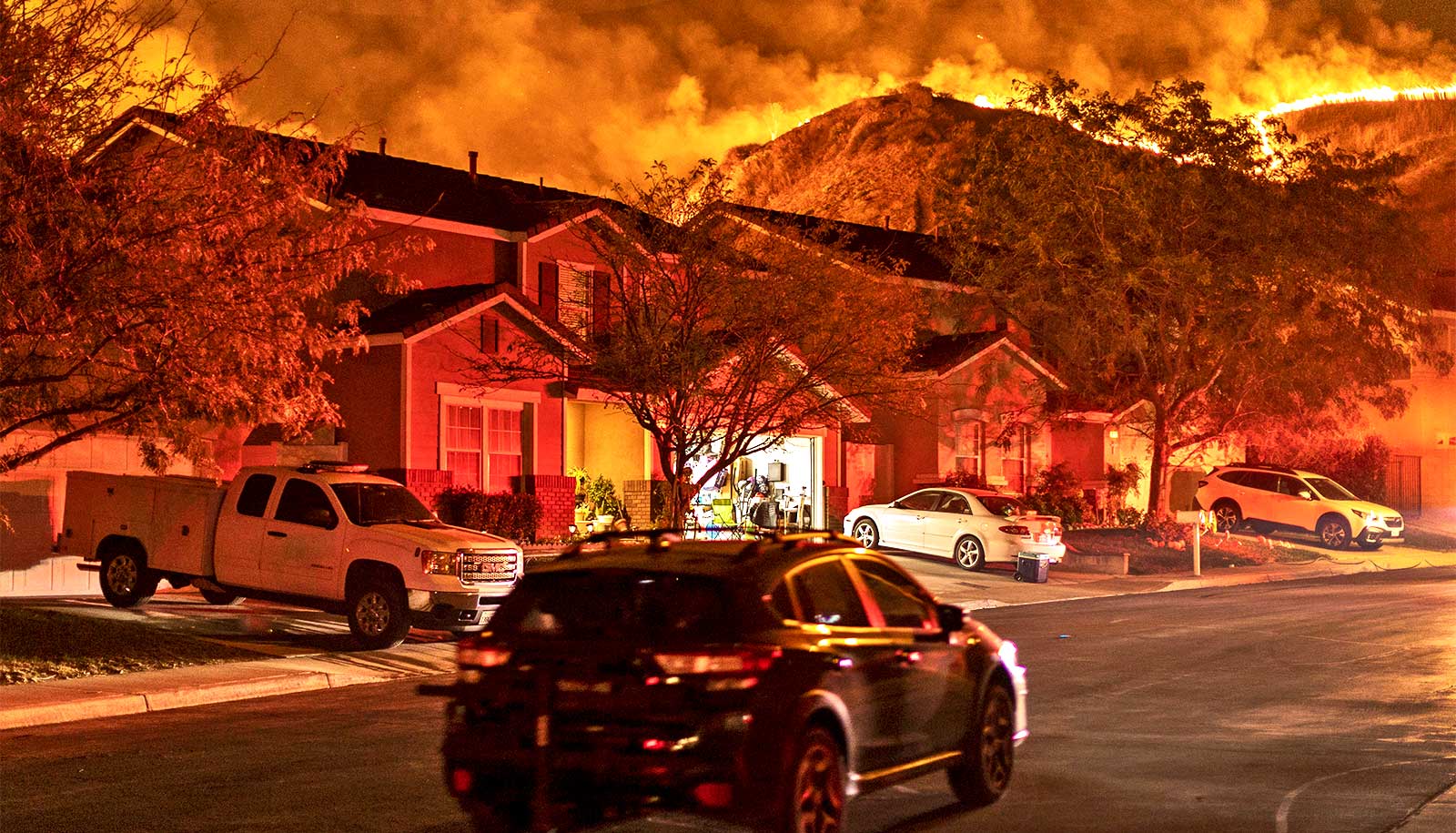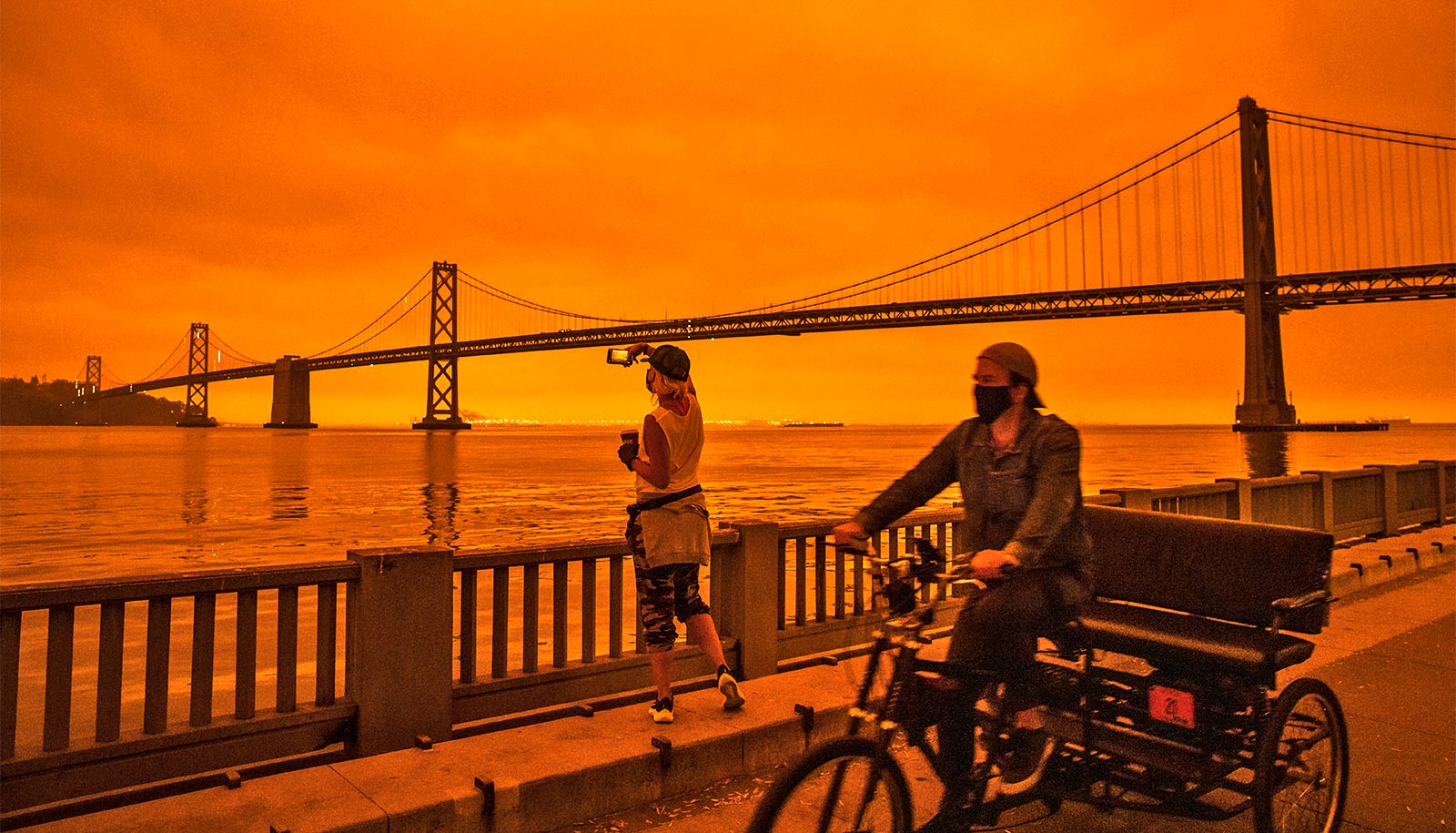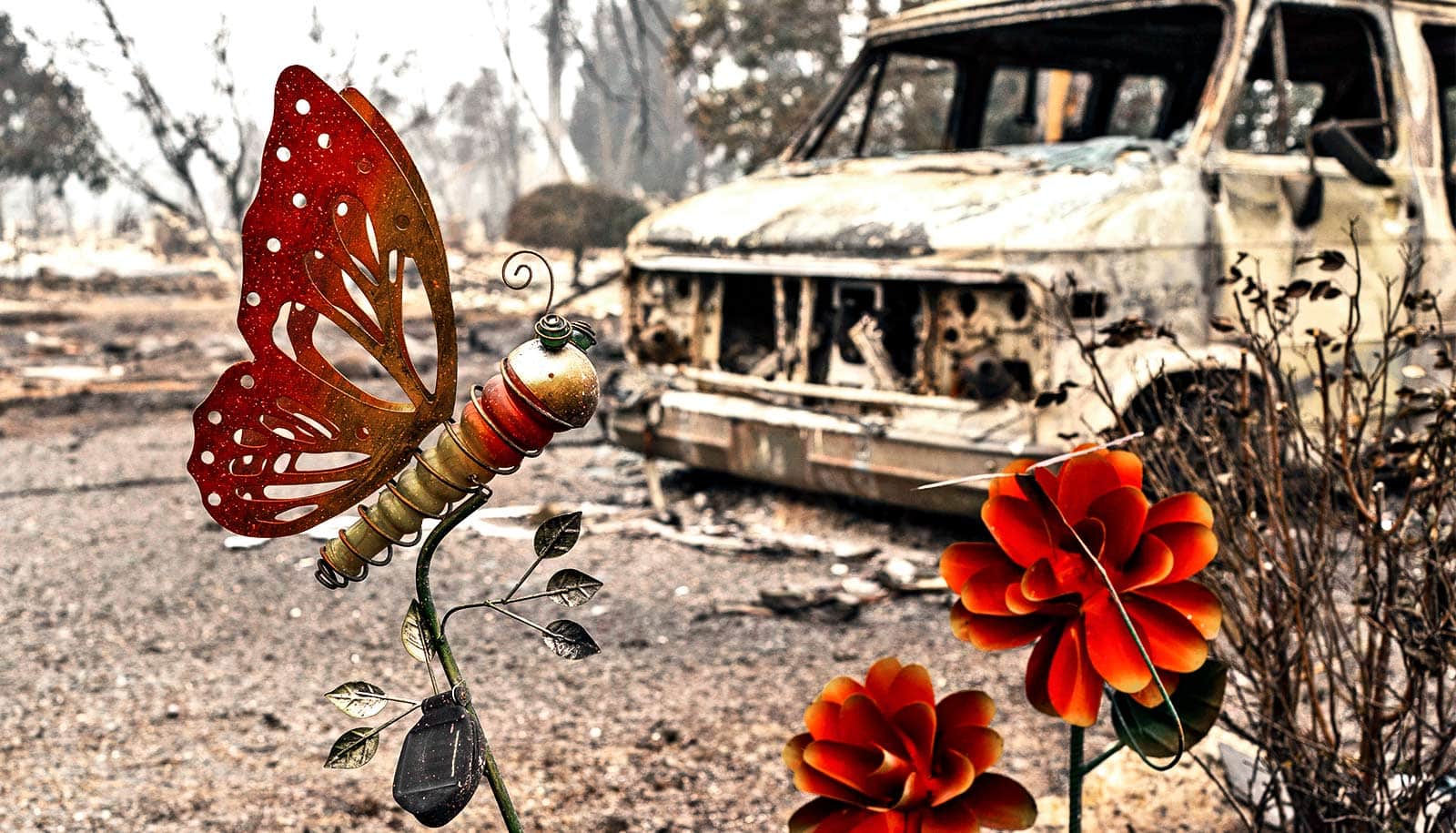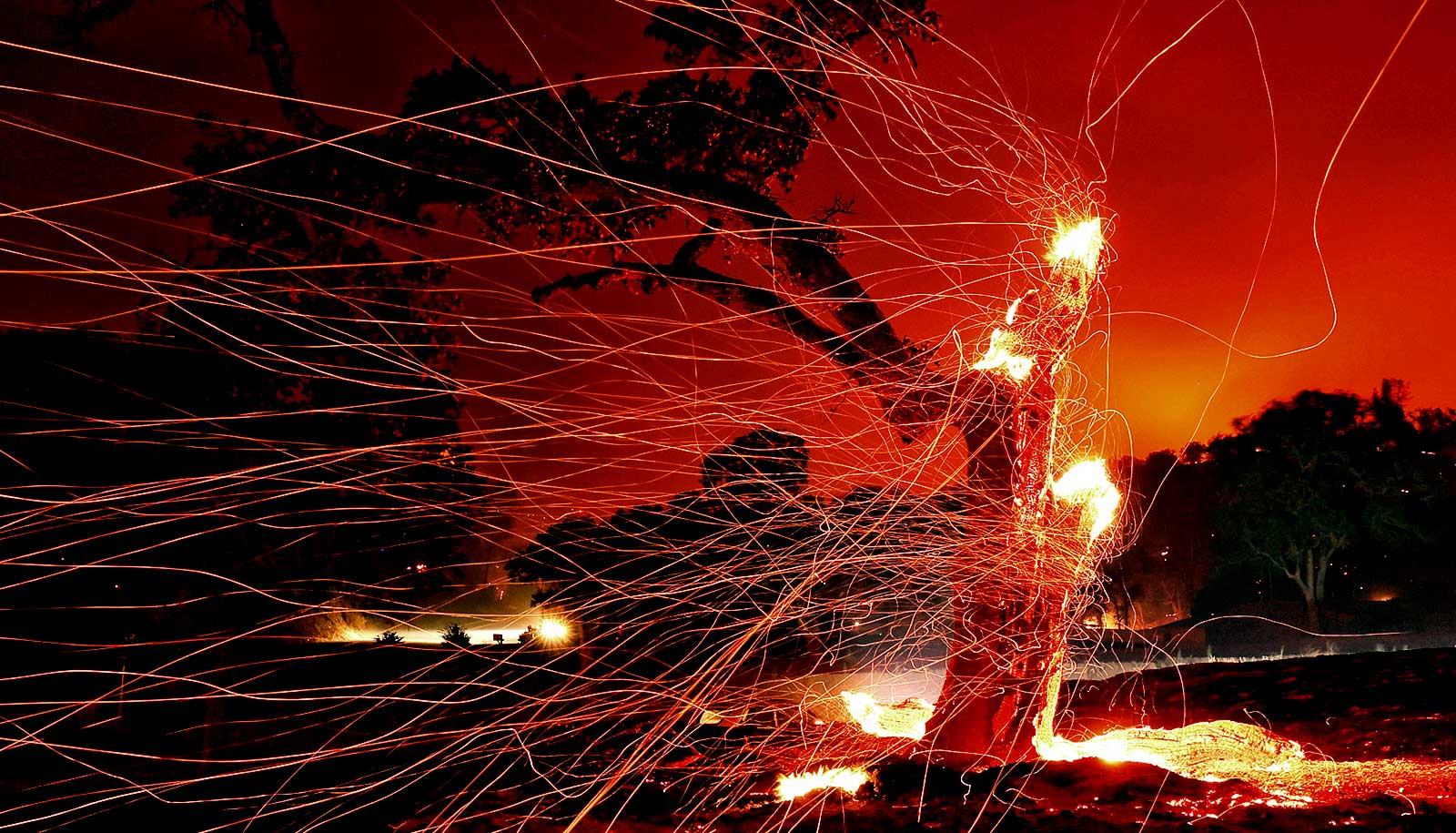For survivors of mega-wildfires that burn entire neighborhoods and those living in nearby communities, property damage and smoke inhalation may be just the first of many ways the blazes wreak havoc on their lives.
In a new study, published in the journal PLOS ONE, researchers describe some of these long-term and often overlooked effects of wildfires, which can range from housing shortages and unemployment to mental health conditions that don’t surface until months or years after the final flames are extinguished.
The study’s findings were compiled from interviews with 21 health and social services providers who assisted in wildfire recovery efforts in California in 2017 and 2018.
“The days of smoke and orange skies are terrible but there are months and years of impacts that are critical to consider as well.”
Here, lead author Annie Rosenthal, a graduate of the University of California, Berkeley School of Social Welfare’s Masters program, and senior author Rohini Haar, an emergency room physician who also serves as a research fellow at Berkeley Law’s Human Rights Center and a lecturer at Berkeley’s School of Public Health, talk about the long shadow wildfire can cast on affected communities, and how recovery efforts don’t always provide enough support:
Most Californians are familiar with the immediate destruction of wildfires, as well as some of the health problems triggered by smoke or contaminated water. Could you describe some of the downstream or “ripple” effects of wildfires that might not get as much recognition?
Rosenthal: Smoke inhalation and property damage get a lot of attention because they are some of the most immediate impacts of the fires. They also look really dramatic—in the media we often see photographs of orange-tinted skies or burned down neighborhoods.
But there are so many health and social issues that are less visible, or that don’t begin to surface until long after the wildfire is over—we call these “ripple” impacts in our study.
One example of ripple impacts are housing issues that surface weeks, months, and sometimes years after the wildfire. People from wildfire-impacted areas get pushed into surrounding communities and move into any available housing, which causes the local rental market to essentially evaporate. Because the demand on housing is so high, local rent prices increase. This eventually displaces people not initially impacted by the wildlife who can no longer afford the price of housing in their area.
Another community-wide, ripple impact of wildfires is health care access. If a pharmacy or doctor’s office is damaged or destroyed in the fire, this negatively affects health care access. Further, local health services are unable to open for some time after the fire because of road closures or power outages, also contributing to a decrease in health care access in the surrounding area.
When you combine the two, and realize that the health care workers are part of the community and can be forced to move away because of the housing crisis, then you see how complicated these ripple impacts can get.
What support is available to communities affected by wildfire? In what ways are these services succeeding, and what are some of the gaps in what they are providing?
Haar: In the initial response phase of the wildfire, people rely heavily on donations and support from the surrounding community. Local government also steps in to provide support for essential, immediate needs including coordinating shelters. Assistance from the Federal Emergency Management Agency (FEMA) generally takes a few days to weeks to arrive because it requires federal approval first.
All of these services provide essential resources to survivors of wildfires, but many of these resources are short-term. Philanthropic and nonprofit organizations are often the only source of long-term support for communities, and their services are also essential to many undocumented individuals who do not qualify for government-sponsored aid.
However, as more devastating fires pop up year after year, there is concern that philanthropy is beginning to see what one participant called “fire fatigue” on the side of donors. These concerns invite us to consider what it would look like if disaster-impacted communities did not have access to philanthropic dollars—our recovery system would likely be in a much more precarious position.
What were the main concerns that service providers voiced about how wildfire recovery is managed in their communities?
Rosenthal: The overarching concerns among the service providers we interviewed were the lack of financial and emotional recovery resources available to survivors and the short-term nature of recovery resources.
Providers talked at length about the long-term nature of disaster issues for individuals and communities. Some health care providers mentioned that patients did not begin to present with post-traumatic stress disorder and other psychological impacts until 1-2 years after the fire. At this point, many of the initial support resources and support have already left the scene.
Are there any specific communities or groups that are at particularly high risk of experiencing long-term impacts of wildfires?
Haar: Low-income communities are disproportionally at risk of facing housing insecurity or homelessness because wildfires can drive up the price of rent in surrounding areas, making it harder for residents to secure stable and affordable housing. Unemployment also worsens after a wildfire, putting those who do not have a safety net at risk of financial insecurity. Every structure damaged or destroyed could mean more folks out of work.
Rosenthal: Another group that is more vulnerable to long-term impacts of wildfires are undocumented individuals. Because of their documentation status, they do not qualify for recovery assistance from FEMA. They are therefore at a disadvantage to receive the same financial support to rebuild their lives as other residents after the wildfire, even though they are some of the most vulnerable among us.
What can we do to ensure that California communities have the resources that they need to recover after wildfires?
Rosenthal: We need to increase and expand health and social services across the state and potentially across the country. In particular, there should be more money and resources allocated to state and local disaster recovery agencies. This would allow agencies to be able to provide aid and support to survivors in the long-term. Recovering from one of these disasters can take a community years, and government aid should reflect that. Aid should also be available to every Californian who needs it, regardless of immigration status.
We also need more workers trained to respond to these disasters. This includes disaster case managers, who would be trained in mental health first aid, and specialize in connecting survivors to emotional and financial support resources. We should also have more mental health professionals hired in disaster impacted areas. Social workers and counselors trained in disaster trauma should be readily available in schools, community centers, and health care facilities.
Haar: The days of smoke and orange skies are terrible but there are months and years of impacts that are critical to consider as well. We cannot simply forget these folks when the rain comes.
Source: UC Berkeley



